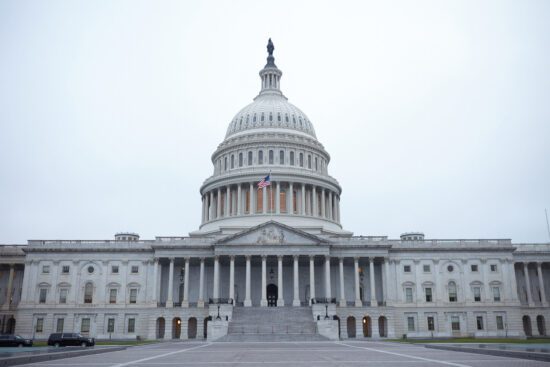As the COVID-19 pandemic and its associated trappings fade from view for many Americans, we are looking for a “new normal.” This is not merely a concern for business and government facilities, but for families as well. In October 2021, Brad Wilcox, Wendy Wang, Jason Carroll, and Lyman Stone released The Divided State of Our Unions: Family Formation in a (Post) COVID-19 America. Their research reveals a gap between religious and secular Americans concerning how marriage is viewed and whether its desirable.
Much could, and should, be said concerning what the author’s data portends. However, in my reading, the study reminded me of an important, though much neglected book (likely due to its release date) from University of Texas sociologist Mark Regnerus (Ph.D., University of North Carolina at Chapel Hill). Regnerus is one of America’s leading researchers on marriage, sex, and religion, and his The Future of Christian Marriage makes an important contribution to our understanding of the culture of Christian marriage and dovetails well with the findings of The Divided State of Our Unions.
A unique factor of Regnerus’ work lies in the global perspective it captures. Collecting survey data and interviews from participants in seven different countries (The United States, Mexico, Spain, Poland, Russia, Lebanon, and Nigeria) allows Regnerus to consider international trends in Christian marriage, not just an American context. This perspective produces the conclusion that “Christians around the world are increasingly accommodating . . . wider shifts in marriage trends. But there is also resistance . . . rooted in vibrant, productive religious groups” (3). It should not be surprising that the Christian faith and Christian marriage are tied together in a symbiotic relationship. But this positive correlation does signal a need for Christians, and especially the formative institutions of the Christian faith, to shore up both our understanding of discipleship to Christ and what precisely God means to do in the institution of marriage.
Marriage as a foundation or capstone?
On the latter, consider the broader trends Regnerus is concerned about. The most prominent is the shift from a foundation view of marriage to a capstone view. In the foundation view, marriage is an institution on which someone can construct a life of deep meaning and satisfaction. As such, those with a foundation view tend to marry earlier and do so with a premium on marriage’s practical importance and the complementary strengths of each spouse. By contrast, the capstone view understands marriage as something to build toward and a symbol of successful life development. As such, fewer people end up getting married; those who do tend to marry later, and with a greater emphasis on “psychological satisfaction.” Regnerus writes, “I cannot over emphasize how monumental, consequential, and subtle this shift is . . . . The capstone vision has unwittingly turned marriage into an unaffordable luxury good” (39-40).
With Regnerus, I am concerned about the effects of this view within our churches. In my role as a pastor, I have been working with a young couple on their pre-marital counseling. They are among the first of their friends to get engaged, and they do so emerging into the post-COVID world. At the end of one discussion, I asked, “Do you have any questions?” which received the response, “Do you think culture, even within the church, does young people a disservice in encouraging us to wait until we are older and more settled to marry?”
My initial response was to point out the pros and cons of both a late marriage and an early marriage. However, it struck me mid-sentence that I was essentially saying “foundational marriage or capstone marriage, there are strengths and weaknesses to both.” While this is certainly true in a limited way, it is also true that a capstone view has a host of unintended consequences when adopted on a societal scale and that a foundational view of marriage seems to have more correspondence with the biblical representation of marriage. Regnerus’ work in The Future of Christian Marriage reveals that these two models should not be primarily understood in light of the tradeoffs associated but assessed in terms of what they offer us and how they conform to the purpose of marriage as an institution.
In an age characterized by deconstruction, the capstone view exhibits remarkable vulnerability. It seems sensible, for example, to suggest an unsatisfying life will result in a deconstruction from the top down, thus beginning with the capstone. As such, a capstone marriage necessarily entails a “voluntary, consumption-oriented, and oft-temporary arrangement” (39). Moreover, increasing concerns about the decline of the middle class should provoke unease regarding this view. If there is either a reshuffling of the current middle class or a dissolution of it all together, then marriage will be perceived as out of reach for an increasing percentage of the populace. The ramifications of this echo throughout the book and one must imagine are only intensified as the world looks increasingly uncertain and unstable.
However, the primary issue of the capstone view, according to Regnerus, is that it challenges the nature of marriage as tied to four primary expectations — totality (marriage as a comprehensive, whole life institution), children, permanence, and sexual fidelity. These four expectations are anticipated by nearly all marriages, yet they are incompatible and unrealistic on the capstone view. Here, Regnerus presents another critical insight, marriage is a ridged institution. That is, marriage generally rejects attempts to change or adapt its basic purpose or structure. He writes,
“Marriage either works on its own terms, or it recedes. Alternate versions of marriage may be buttressed for a time—decades even—but the energy and resources it takes to prop up public opinion will wane eventually. Insofar as Christians’ understanding of marriage drifts away from the model [comprised of totality, fidelity, permanence, and children], their interest in marrying diminishes” (83).
Marriage, as a ridged institution, is something one must enter to be formed as a person rather than to reformulate marriage around the desires and goals of the bride and groom. From a culture war position, we might take solace in knowing “Public relations campaigns can win ballot initiatives, but they cannot overhaul marriage,” but from a pastoral perspective we need to be concerned that “Marriage rates are shrinking, then, because of increasing disinterest in what marriage actually is” (84-85).
There is a part of me that wants to advocate, at this point, for a moratorium on Christian weddings involving the writing of unique vows or customization of much of the wedding ceremony. Regnerus’ work reminds us of the importance of tying younger Christians, especially as they begin to form their lives and families, to the ancient pathways and traditions of Christian formation — to advocate for seeing oneself as entering something not of one’s own making nor of one’s own purposes. We might do well then to consider what the contemporary resurgent interest in “liturgies” would tell us about preparing, officiating, and pastoring our young adults in marriage.
Correcting the capstone error
Regnerus offers a different avenue to firm up the future of Christian marriage: do away with cheap sex. In relationship to sex, Regnerus returns to the familiar ground of his previous book Cheap Sex: The Transformation of Men, Marriage, and Monogamy (2017). The basic tenant of that work was that sex was becoming increasingly accessible and thus “cheap” for men. He writes, “Sex is cheap if women expect little from men in return for sex, and if men do not have to supply much time, attention, resources, recognition, or fidelity in order to experience sex . . . . The ‘cost’ of sex can be measured by the speed at which a new sexual partner can be found, or in the frequency with which one has sex” (91).
While primarily being a criticism directed toward the broader culture, Regnerus expresses concern that the Christians do not see sex as being any more “expensive” or holding any more of an elevated view than the broader populace. This “cheap” sex disincentivized marriage and monogamy leading to women often needing to make painful tradeoffs to participate in the dating market. This cheap sex is a pre-requisite for the rise of the capstone view of marriage. Without accessible sex, men must mature and be willing to marry to have sex. If a culture can do away with cheap sex, it can return to a foundation view of marriage.
There is a sense in which many pastors and Christian leaders are probably happy with a capstone view of marriage if it does not detract from a biblical sexual ethic. However, Regnerus’ data does not inspire confidence that young Christians are pursuing chastity. While we might wonder, at least for Americans, if this is a part of the backlash to the excesses of purity culture, the fact remains that sex — whether real or virtual — is readily available, and many young adults lack the theological equipment to understand why something so glamorized in both the church, and culture more broadly, should be off-limits for, say, an engaged couple planning their wedding.
As a pastor, I find that Regnerus’ concerns run on a parallel track to mine. I want to see the church be a haven against the pressures of cheap sex and expensive matrimony. Unfortunately, it seems that the ability to mobilize Christian institutions like denominations, parachurches, and Christian universities is fraught with the baggage of deconstructing the purity movement and the weakness of those institutions in our anti-institutional age.
If sex is cheap, chastity and matrimony are expensive, which leads to the finding that uncertainty plagues marriage. “Uncertainty and its siblings—ambiguity, individualism, and materialism—characterize the marriage market today, giving birth to the sense that our most significant relationships may be more disposable than we thought” (160). This is the result of several features of the modern world, including economic changes, parental divorce, social media, and online dating. Such features are also connected to the rise of generalized anxiety among young adults.
It is helpful to remember and reflect that The Future of Christian Marriage was released early in 2020, thus prior to COVID-19 and its associated disruptions, as well as the new global uncertainty surrounding the Russian war on Ukraine. It is not yet clear whether such major events will be the cause of an increasing feeling of uncertainty or if they will reveal the surprising strength of the martial union and encourage a movement back to a foundational view with the church. In terms of COVID-19, Wilcox and Co.’s data was encouraging on this account.
The transition from a foundational view to capstone view happened much earlier among non-Christians. However, that move has not been accompanied by the projected benefits which were presumed to come from delays in marriage. Instead of resisting the cultural impulse, the church, according to Regnerus, appears to be following suit. In light of this, Regnerus closes his book with eight suggestions to “revitalize Christian Marriage” (161). The list reveals the importance of parents, the home, and the local church. In this way, it acts as a good reminder of the importance of subsidiarity and the small platoons of life. Like so many projects that lie ahead, the church will need the faithful presence and thoughtful resistance which accompanies confidence that we follow the risen Lord.










